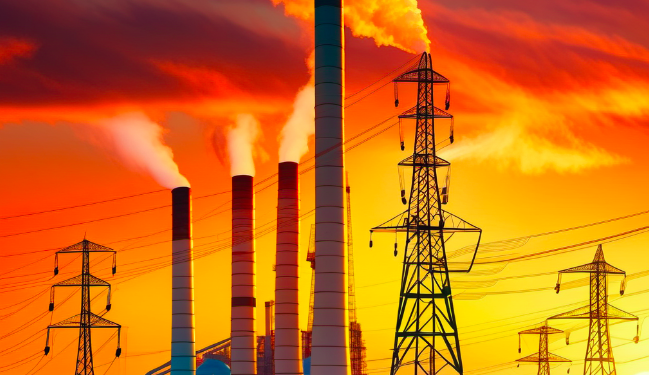I am part of a climate network where the VCM (Voluntary Carbon Market) is a regular source of heated debate. Particularly since The Guardian (and other publications) continually make severe accusations against carbon credit certifier Verra for certifying “junk” carbon offsets.
Debate is to be welcomed, and encouraged. But quality debate that leads to quality decisions must always be informed.
Part 1 (Because it’s that complex)
Last week I explained the concept of the ‘carbon offset’, and before we cast any aspersions on Verra – let’s break down the intricacies of the VCM and the role of certifiers like Verra. My favorite explainer is to imagine an overflowing bathtub in your household. The tub is overflowing because the tap was left open, and at its highest-pressure point.
How do you deal with this situation? Logic would dictate that you run into the bathroom and turn off the tap immediately and then deal with clean up after. We must never forget or lose sight of the fact that eliminating fossil fuels is the equivalent of turning off the tap.
With the Intergovernmental Panel on Climate Change branding the current epoch as “a code red for humanity” and faith in free enterprise at an all-time low, it is perhaps an odd time for a push to put the fate of the planet into the hands of the market. However, here we are.
Avoiding and reducing carbon as enabled through the carbon market is the equivalent of turning the tap, one slow, circuitous turn at a time. It reduces the flow, but doesn’t cut it immediately. Removing emissions is the equivalent of pulling the plug.
The VCM is one of the main drivers propelling each circuitous turn. It is where private corporations and interested entities or individuals’ issue, buy and sell carbon credits outside of a regulated compliance market.
The VCM aims to create a space where private actors can directly finance climate mitigation activities (i.e., activities that remove or reduce greenhouse gas emissions). The VCM is enabled by a series of processes:
- Project Design and Development: a project developer will identify, design and implement a carbon project. They essentially set up the project to issue carbon credits. Each credit generated has a specific vintage referencing the year it was issued and a specific delivery date which is when that credit will be available on the market.
- Project Verification: Any GHG emission reductions and removals need to be monitored, reported and verified (MRV). This involves several scientific steps to measure the amount of GHGs reduced by a specific activity, and report these findings to an accredited third party. Once the third party has verified the claims, they are certified and then carbon credits issued.
- Project Certification: In order to generate a carbon credit that can be valid, it has to be certified by carbon standards. Carbon standards are private organisations that provide a rigorous set of rules guiding project developers in the design of carbon project activities. The carbon standards are vital to the VCM as they certify, issue and facilitate the trade of carbon credits. There are a number of standards (problem number 1) that use different methodologies (problem number 2) for measuring and verifying carbon emission reduction. Verra (The Verified Carbon Standard), referenced earlier is one of these standards. Unfortunately, Verra isn’t just a random example of a carbon standard company, they are the carbon standard company, currently certifying 75% of all credits in the market (problem number 3).
- Issuance and Retirement: Carbon credits are issued based on the verified emissions reductions to the project developers account and effectively ready for sale. A credit is retired when they are acquired by the end user (Corporate or Private Buyer) and put towards their climate goals. A retired credit is removed from the market.
Just as in any other commodities market, other actors try to link supply and demand while reaping a significant share of the revenue, enter scene – brokers and retail traders. Traders can purchase large amounts of credits directly from source, bundle them into portfolios characterized by CO2 tonnage and then sell these portfolios to the end buyer, usually while pocketing a hefty commission.
But remember, the VCM often referred to as the “Wild Wild West” is not regulated by governments. It is enabled by global policy (Paris Agreement) and while there have been attempts to wield government control (Climate Change Amendment Act, 2023), those who participate in the VCM do so voluntarily. More on this, the process of retiring a credit, and the challenges faced by the VCM in our next article.
If you’re keen to understand the elusive world of carbon and how you can strategically engage, keep reading our carbon series where we dig deeper, challenge ideologies and navigate the intricacies of this dynamic landscape.
RELATED; Explainer: What are Carbon Credits?
About the Author:
Dr. Yvonne Maingey-Muriuki is an expert in climate change adaptation, with over 15 years of combined academic and practical experience. She is an advisor to multiple entities including EABL, NCBA Group, Bamburi Cement, Nairobi Securities Exchange (NSE), Save the Children, Oxfam and major players in the Tea Sector in Kenya, in climate risk, climate finance, sustainability and ESG reporting. Dr Yvonne is also Cofounder and CEO of Klima Harvest, a new global marketplace, exchange, and auction platform for high integrity carbon credits generated in Africa.



